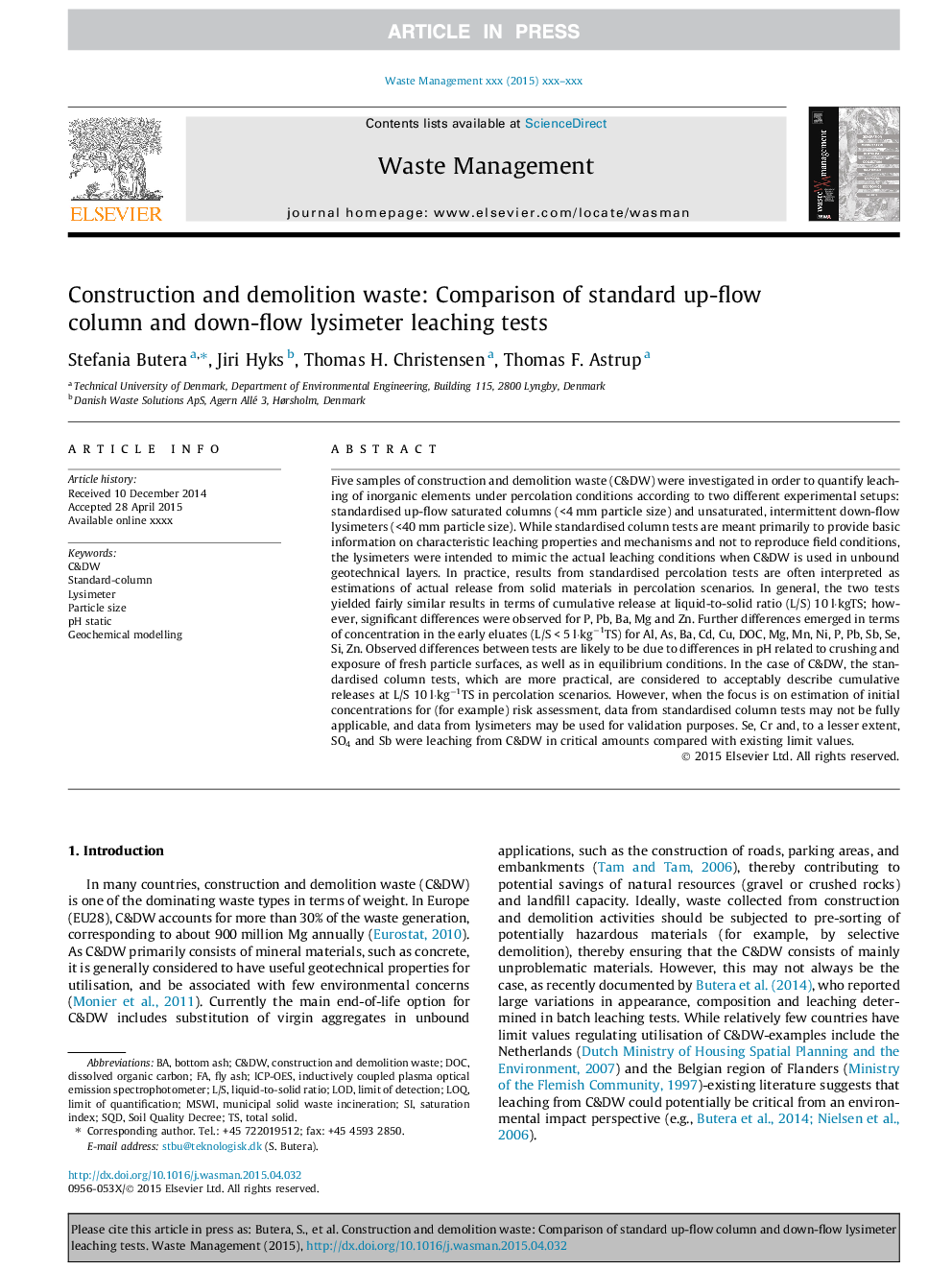| Article ID | Journal | Published Year | Pages | File Type |
|---|---|---|---|---|
| 6353980 | Waste Management | 2015 | 12 Pages |
Abstract
Five samples of construction and demolition waste (C&DW) were investigated in order to quantify leaching of inorganic elements under percolation conditions according to two different experimental setups: standardised up-flow saturated columns (<4 mm particle size) and unsaturated, intermittent down-flow lysimeters (<40 mm particle size). While standardised column tests are meant primarily to provide basic information on characteristic leaching properties and mechanisms and not to reproduce field conditions, the lysimeters were intended to mimic the actual leaching conditions when C&DW is used in unbound geotechnical layers. In practice, results from standardised percolation tests are often interpreted as estimations of actual release from solid materials in percolation scenarios. In general, the two tests yielded fairly similar results in terms of cumulative release at liquid-to-solid ratio (L/S) 10 l·kgTS; however, significant differences were observed for P, Pb, Ba, Mg and Zn. Further differences emerged in terms of concentration in the early eluates (L/S < 5 l·kgâ1TS) for Al, As, Ba, Cd, Cu, DOC, Mg, Mn, Ni, P, Pb, Sb, Se, Si, Zn. Observed differences between tests are likely to be due to differences in pH related to crushing and exposure of fresh particle surfaces, as well as in equilibrium conditions. In the case of C&DW, the standardised column tests, which are more practical, are considered to acceptably describe cumulative releases at L/S 10 l·kgâ1TS in percolation scenarios. However, when the focus is on estimation of initial concentrations for (for example) risk assessment, data from standardised column tests may not be fully applicable, and data from lysimeters may be used for validation purposes. Se, Cr and, to a lesser extent, SO4 and Sb were leaching from C&DW in critical amounts compared with existing limit values.
Keywords
Related Topics
Physical Sciences and Engineering
Earth and Planetary Sciences
Geotechnical Engineering and Engineering Geology
Authors
Stefania Butera, Jiri Hyks, Thomas H. Christensen, Thomas F. Astrup,
